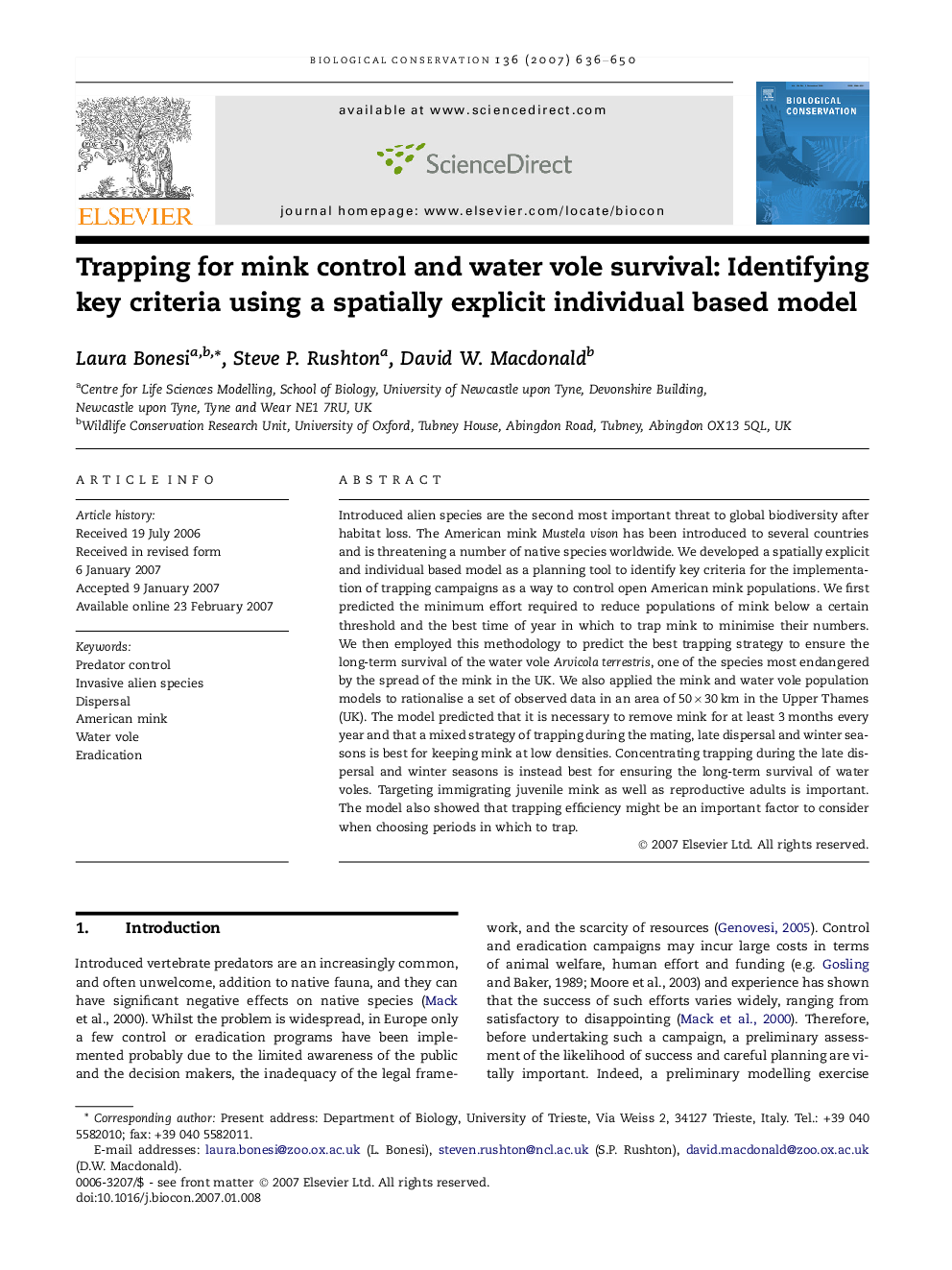| کد مقاله | کد نشریه | سال انتشار | مقاله انگلیسی | نسخه تمام متن |
|---|---|---|---|---|
| 4387148 | 1304591 | 2007 | 15 صفحه PDF | دانلود رایگان |

Introduced alien species are the second most important threat to global biodiversity after habitat loss. The American mink Mustela vison has been introduced to several countries and is threatening a number of native species worldwide. We developed a spatially explicit and individual based model as a planning tool to identify key criteria for the implementation of trapping campaigns as a way to control open American mink populations. We first predicted the minimum effort required to reduce populations of mink below a certain threshold and the best time of year in which to trap mink to minimise their numbers. We then employed this methodology to predict the best trapping strategy to ensure the long-term survival of the water vole Arvicola terrestris, one of the species most endangered by the spread of the mink in the UK. We also applied the mink and water vole population models to rationalise a set of observed data in an area of 50 × 30 km in the Upper Thames (UK). The model predicted that it is necessary to remove mink for at least 3 months every year and that a mixed strategy of trapping during the mating, late dispersal and winter seasons is best for keeping mink at low densities. Concentrating trapping during the late dispersal and winter seasons is instead best for ensuring the long-term survival of water voles. Targeting immigrating juvenile mink as well as reproductive adults is important. The model also showed that trapping efficiency might be an important factor to consider when choosing periods in which to trap.
Journal: Biological Conservation - Volume 136, Issue 4, May 2007, Pages 636–650